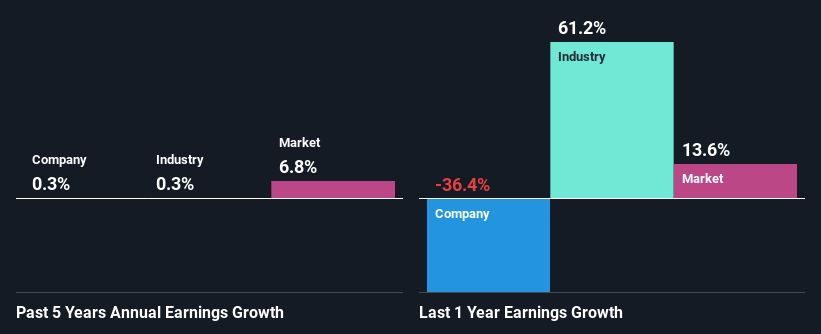Can Precinct Properties New Zealand Limited (NZSE:PCT) Performance Keep Up Given Its Mixed Bag Of Fundamentals?
Most readers would already know that Precinct Properties New Zealand's (NZSE:PCT) stock increased by 2.5% over the past month. However, we decided to study the company's mixed-bag of fundamentals to assess what this could mean for future share prices, as stock prices tend to be aligned with a company's long-term financial performance. In this article, we decided to focus on Precinct Properties New Zealand's ROE.
Return on equity or ROE is a key measure used to assess how efficiently a company's management is utilizing the company's capital. In simpler terms, it measures the profitability of a company in relation to shareholder's equity.
Check out our latest analysis for Precinct Properties New Zealand
How Do You Calculate Return On Equity?
The formula for return on equity is:
Return on Equity = Net Profit (from continuing operations) ÷ Shareholders' Equity
So, based on the above formula, the ROE for Precinct Properties New Zealand is:
6.8% = NZ$139m ÷ NZ$2.0b (Based on the trailing twelve months to December 2020).
The 'return' is the yearly profit. That means that for every NZ$1 worth of shareholders' equity, the company generated NZ$0.07 in profit.
What Is The Relationship Between ROE And Earnings Growth?
Thus far, we have learned that ROE measures how efficiently a company is generating its profits. Based on how much of its profits the company chooses to reinvest or "retain", we are then able to evaluate a company's future ability to generate profits. Generally speaking, other things being equal, firms with a high return on equity and profit retention, have a higher growth rate than firms that don’t share these attributes.
A Side By Side comparison of Precinct Properties New Zealand's Earnings Growth And 6.8% ROE
On the face of it, Precinct Properties New Zealand's ROE is not much to talk about. A quick further study shows that the company's ROE doesn't compare favorably to the industry average of 10.0% either. Hence, the flat earnings seen by Precinct Properties New Zealand over the past five years could probably be the result of it having a lower ROE.
Next, on comparing Precinct Properties New Zealand's net income growth with the industry, we found that the company's reported growth is similar to the industry average growth rate of 0.3% in the same period.
The basis for attaching value to a company is, to a great extent, tied to its earnings growth. It’s important for an investor to know whether the market has priced in the company's expected earnings growth (or decline). This then helps them determine if the stock is placed for a bright or bleak future. Is PCT fairly valued? This infographic on the company's intrinsic value has everything you need to know.
Is Precinct Properties New Zealand Using Its Retained Earnings Effectively?
Precinct Properties New Zealand seems to be paying out most of its income as dividends judging by its three-year median payout ratio of 85%, meaning that the company retains only 15% of its profits. However, this is typical for REITs as they are often required by law to distribute most of their earnings. So this probably explains the absence of growth in earnings.
Moreover, Precinct Properties New Zealand has been paying dividends for at least ten years or more suggesting that management must have perceived that the shareholders prefer dividends over earnings growth. Our latest analyst data shows that the future payout ratio of the company over the next three years is expected to be approximately 92%. Still, forecasts suggest that Precinct Properties New Zealand's future ROE will drop to 4.8% even though the the company's payout ratio is not expected to change by much.
Summary
On the whole, we feel that the performance shown by Precinct Properties New Zealand can be open to many interpretations. Although the company has shown a fair bit of growth in earnings, the reinvestment rate is low. Meaning, the earnings growth number could have been significantly higher had the company been retaining more of its profits and reinvesting that at a higher rate of return. Having said that, looking at the current analyst estimates, we found that the company's earnings are expected to gain momentum. To know more about the company's future earnings growth forecasts take a look at this free report on analyst forecasts for the company to find out more.
This article by Simply Wall St is general in nature. It does not constitute a recommendation to buy or sell any stock, and does not take account of your objectives, or your financial situation. We aim to bring you long-term focused analysis driven by fundamental data. Note that our analysis may not factor in the latest price-sensitive company announcements or qualitative material. Simply Wall St has no position in any stocks mentioned.
Have feedback on this article? Concerned about the content? Get in touch with us directly. Alternatively, email editorial-team (at) simplywallst.com.

 Yahoo Finance
Yahoo Finance 
